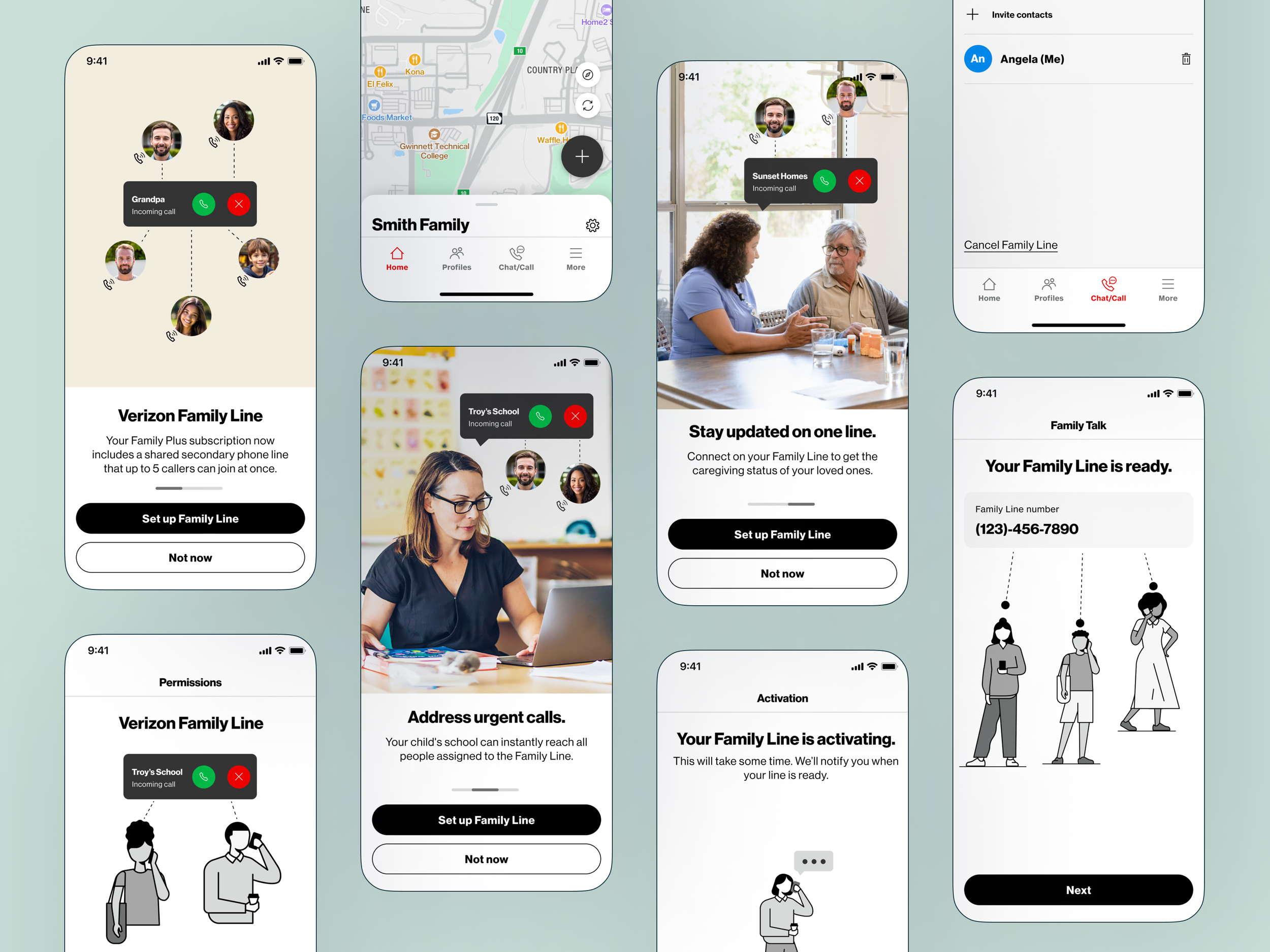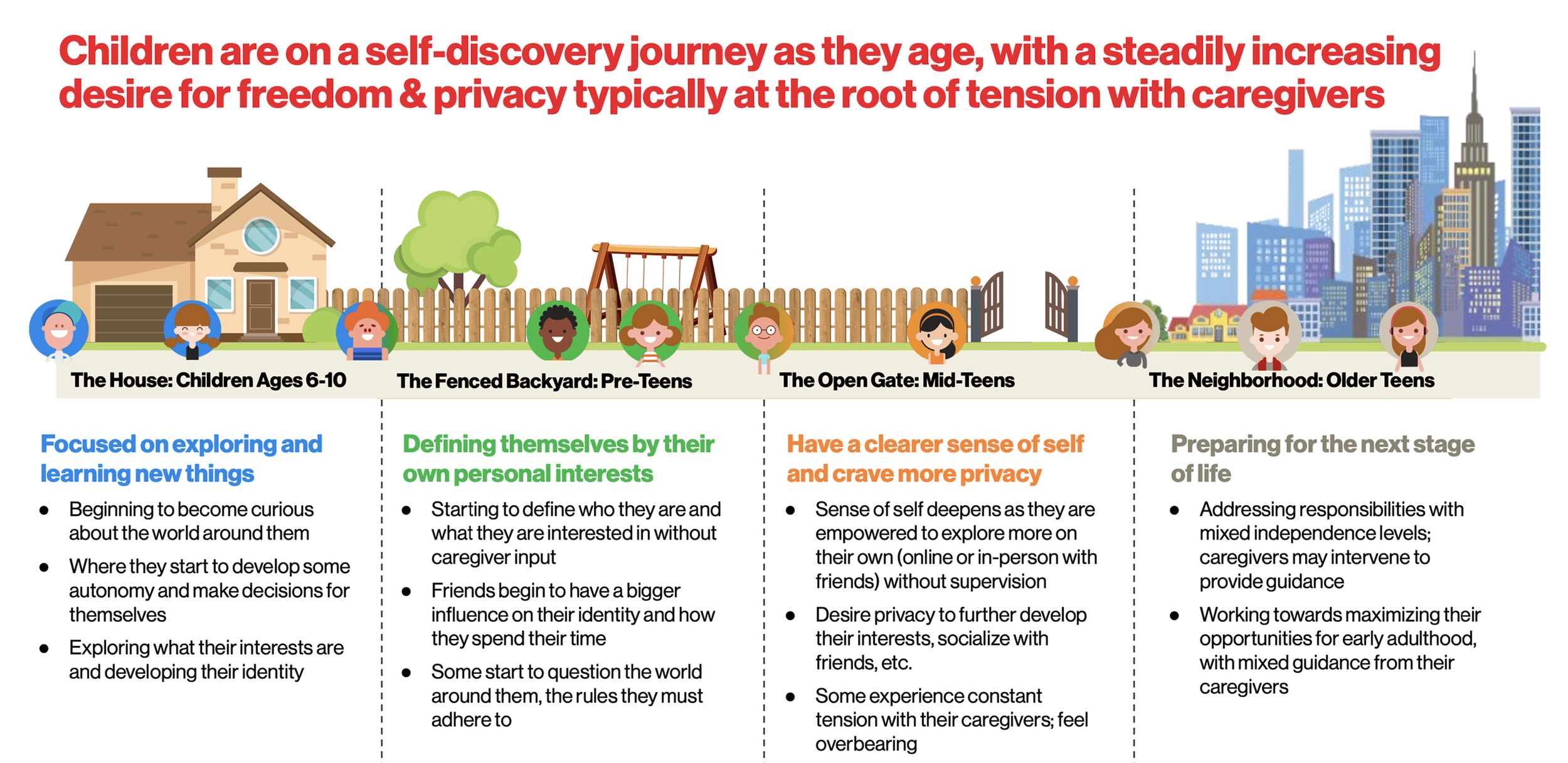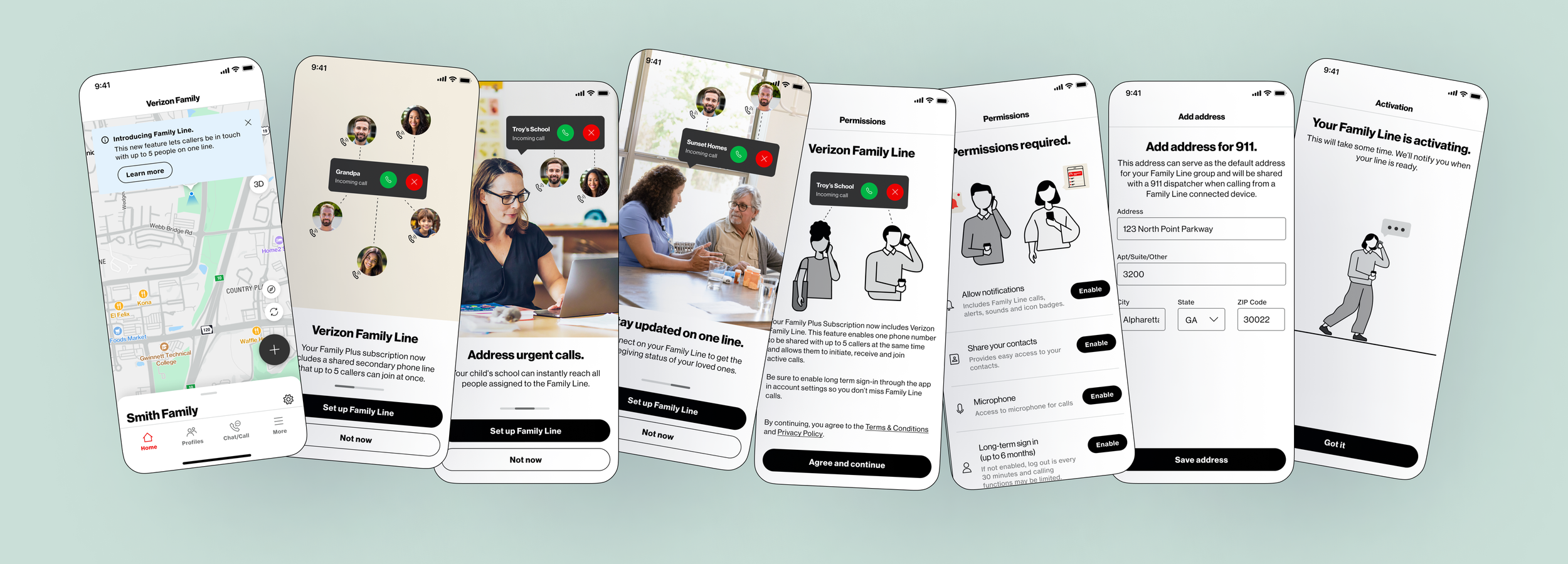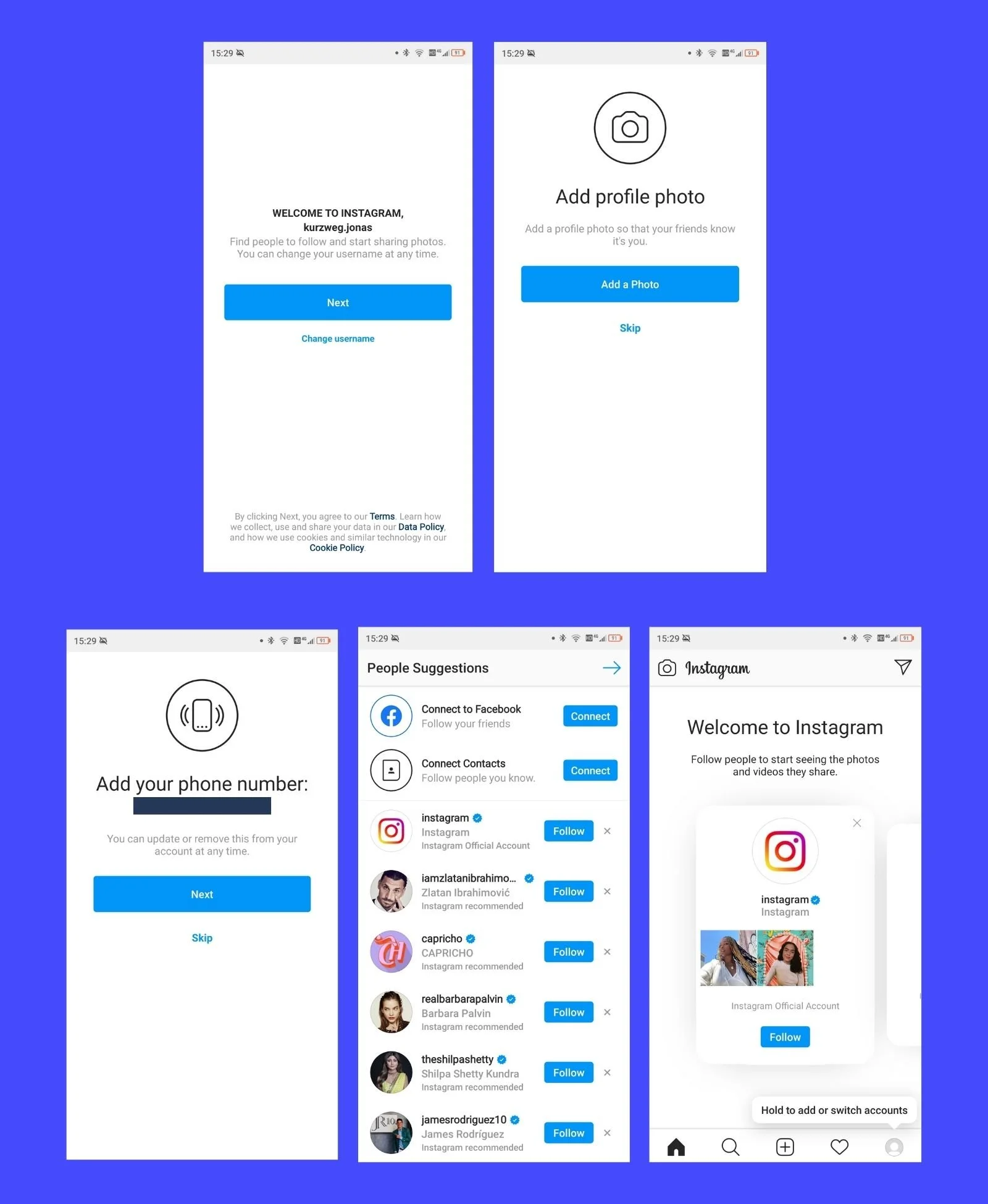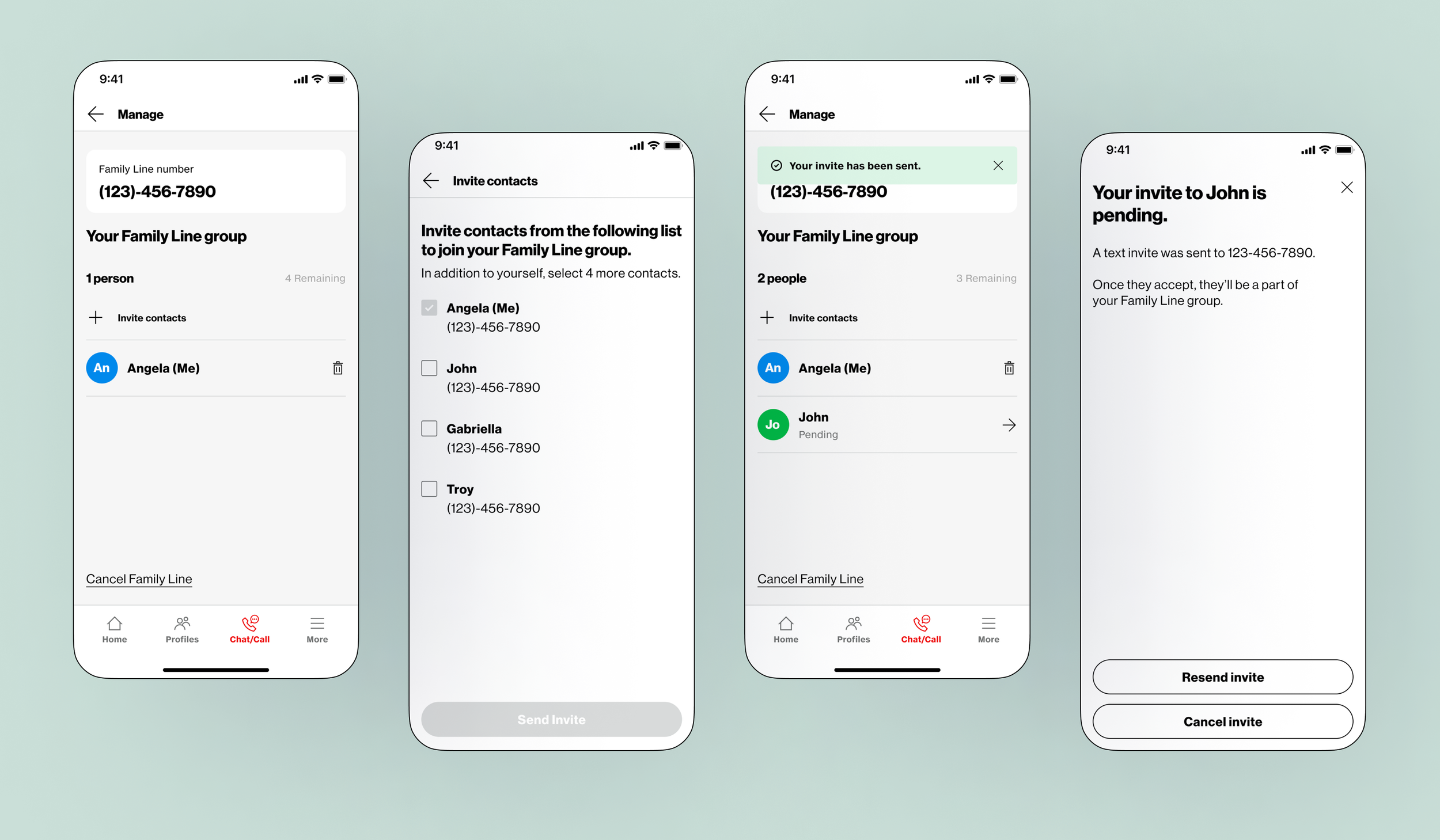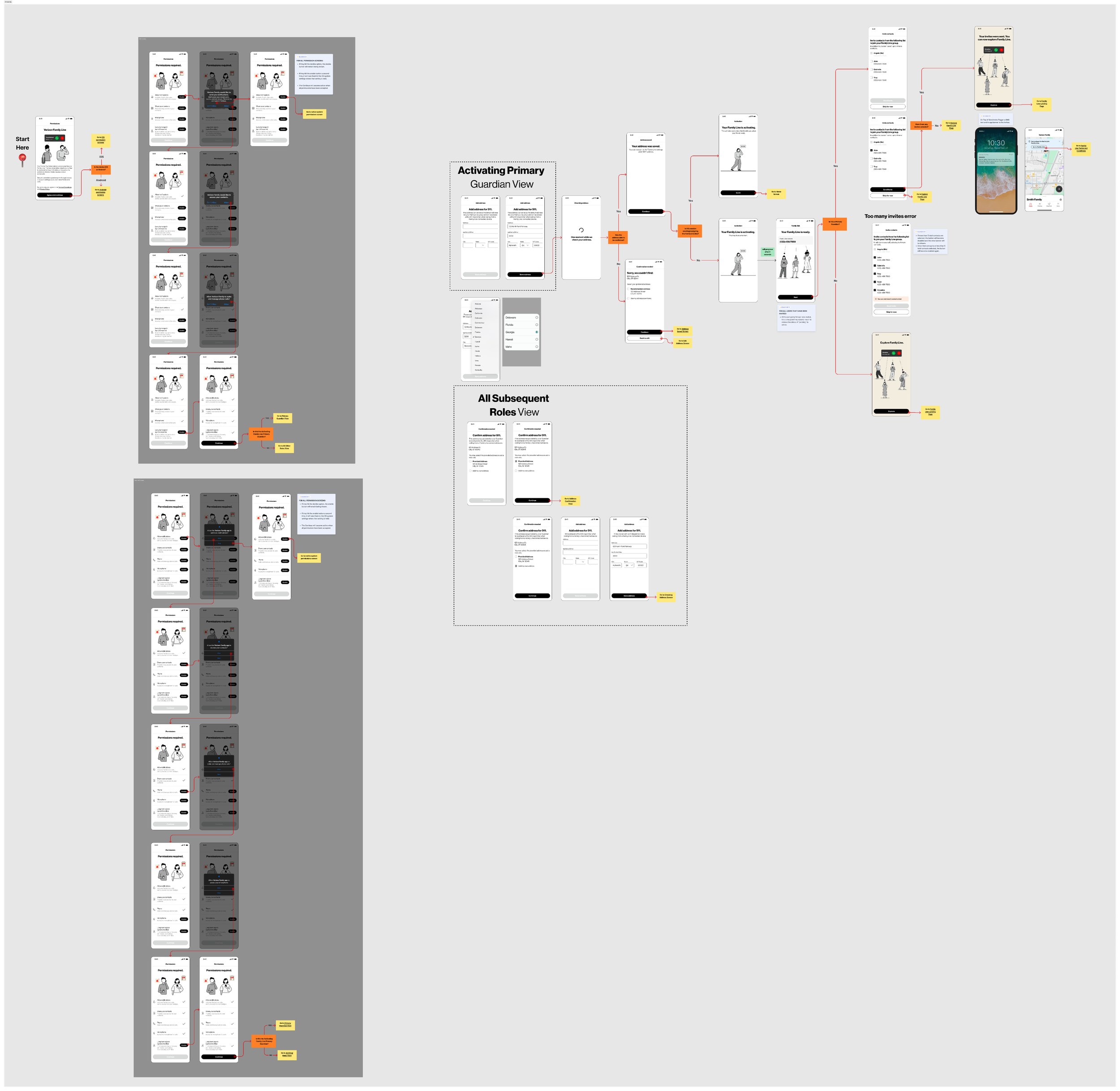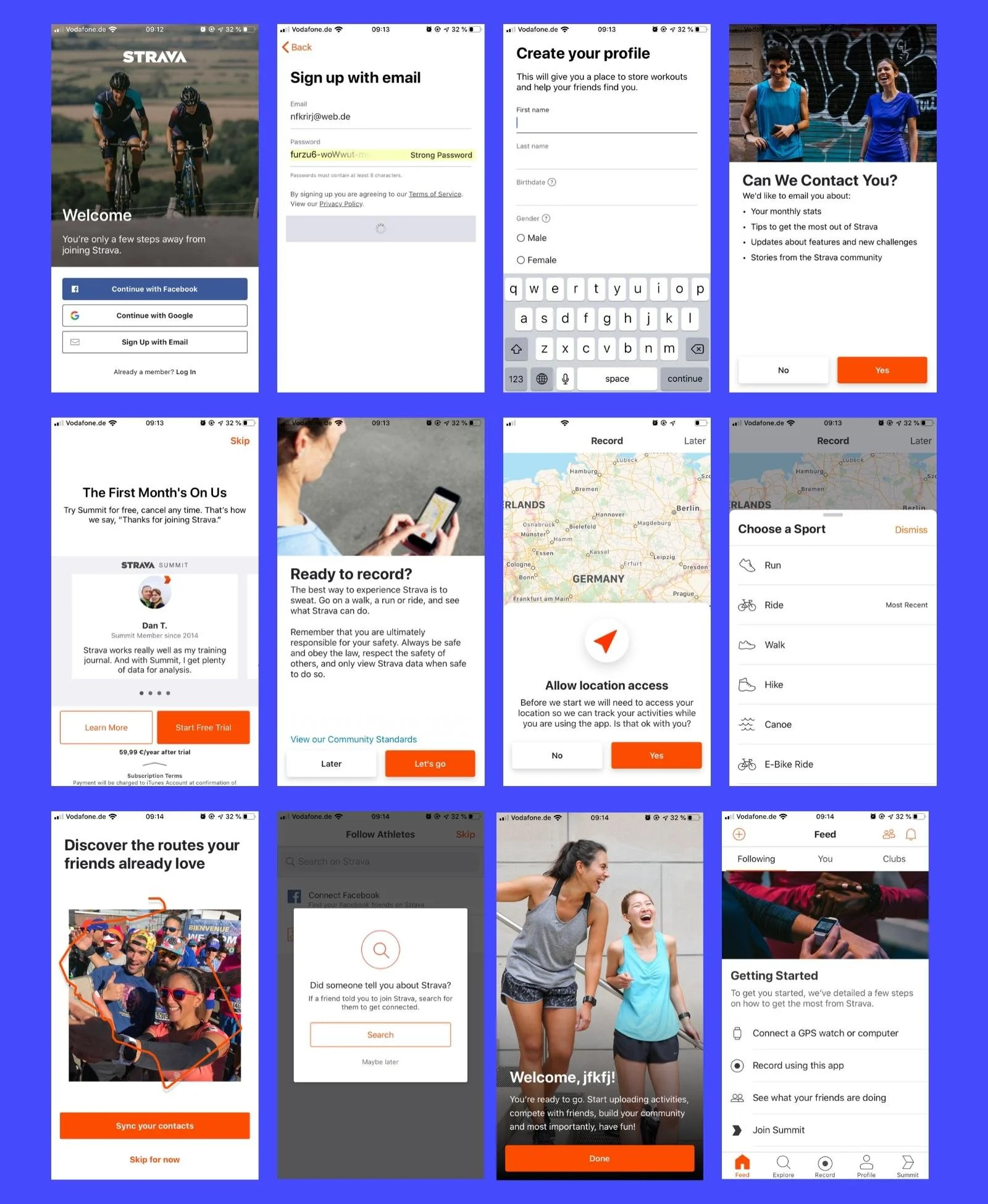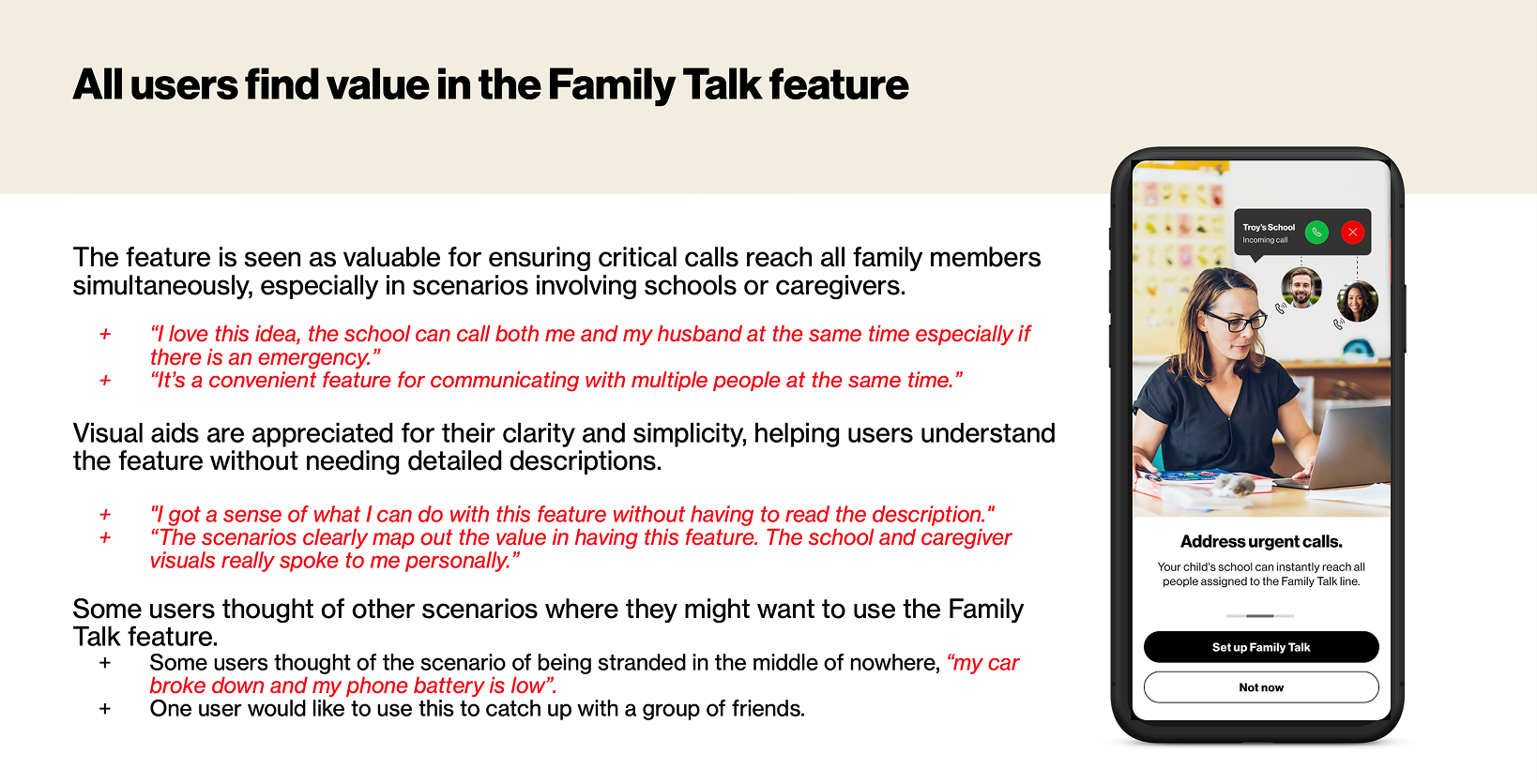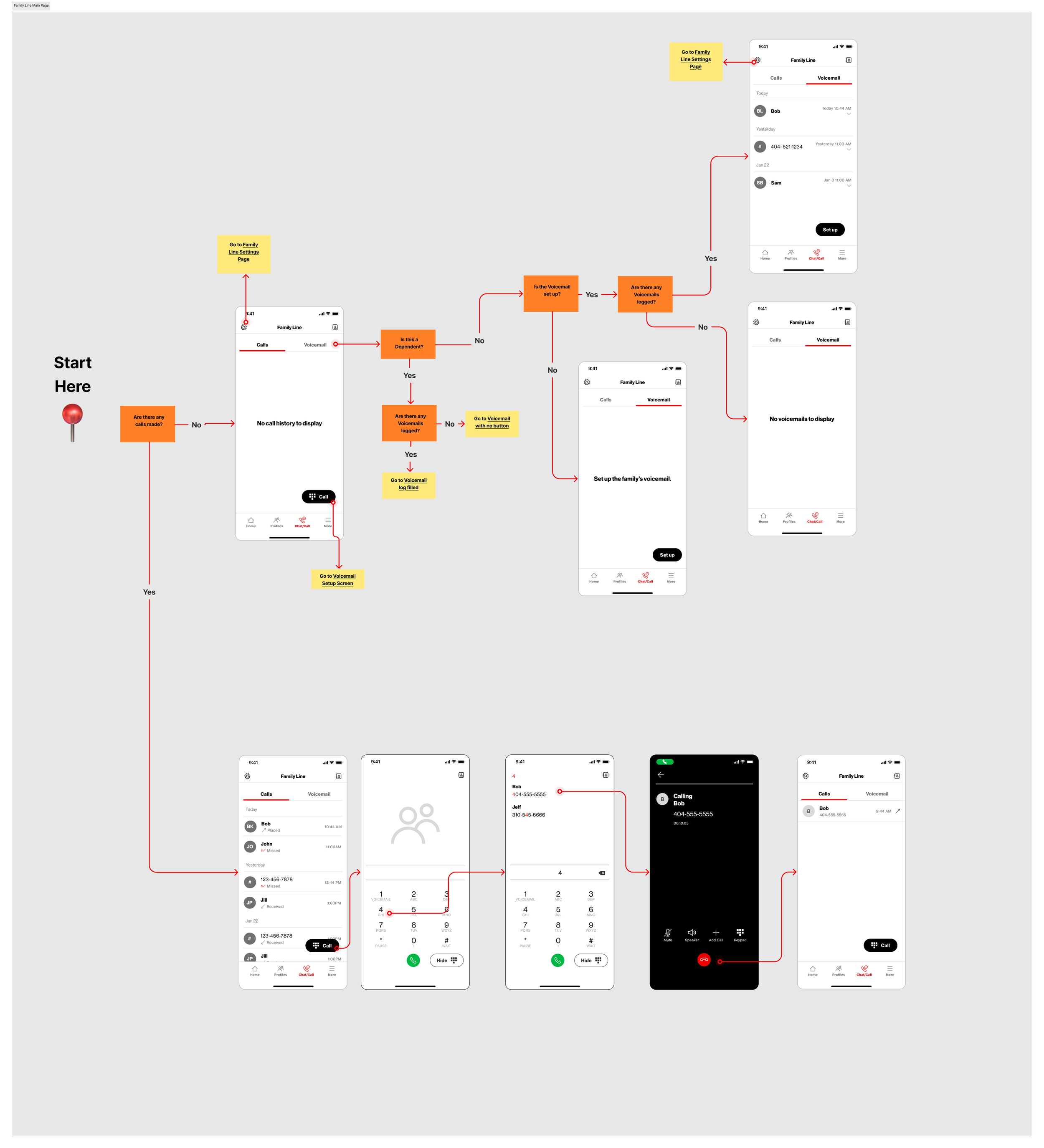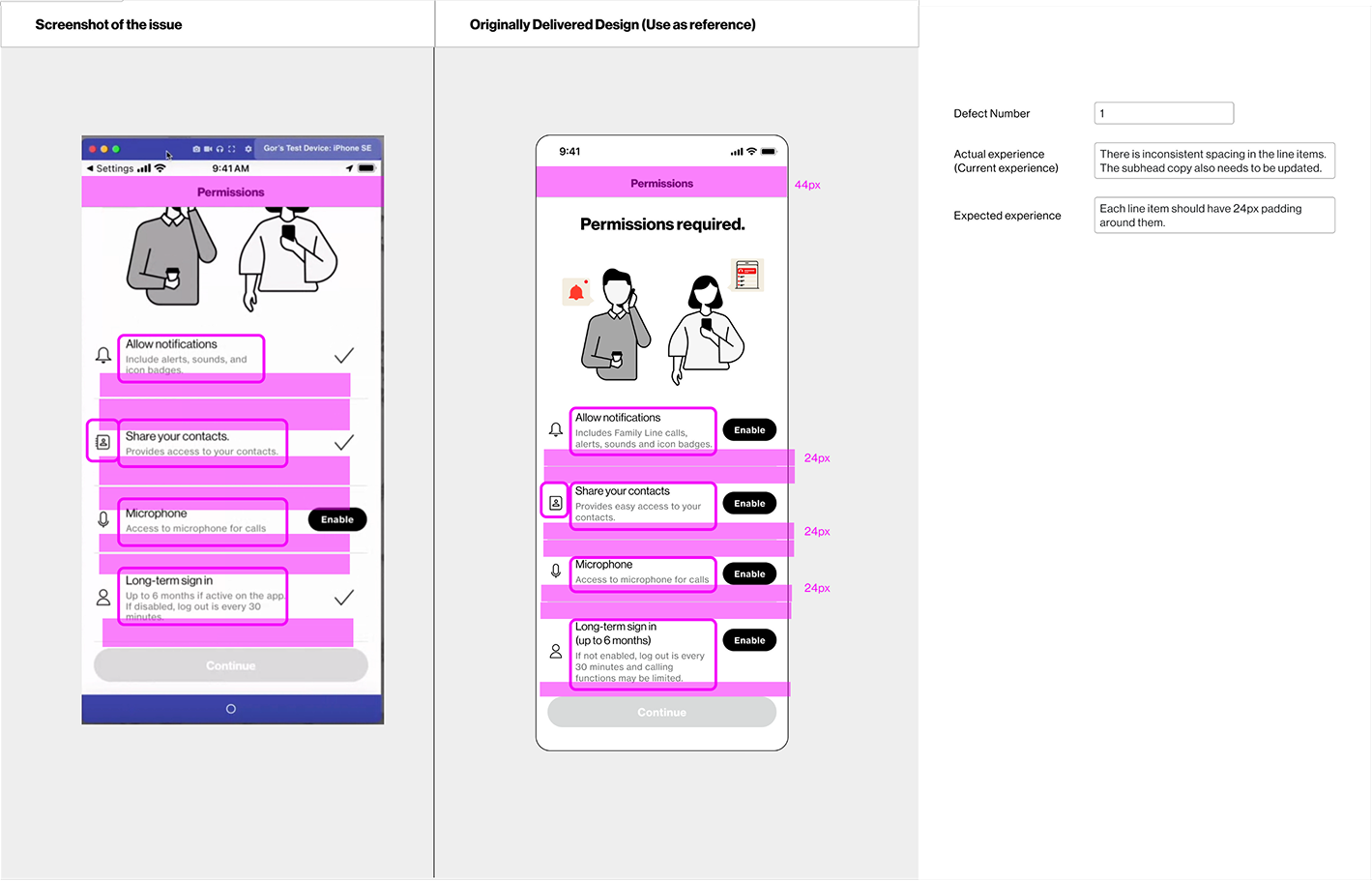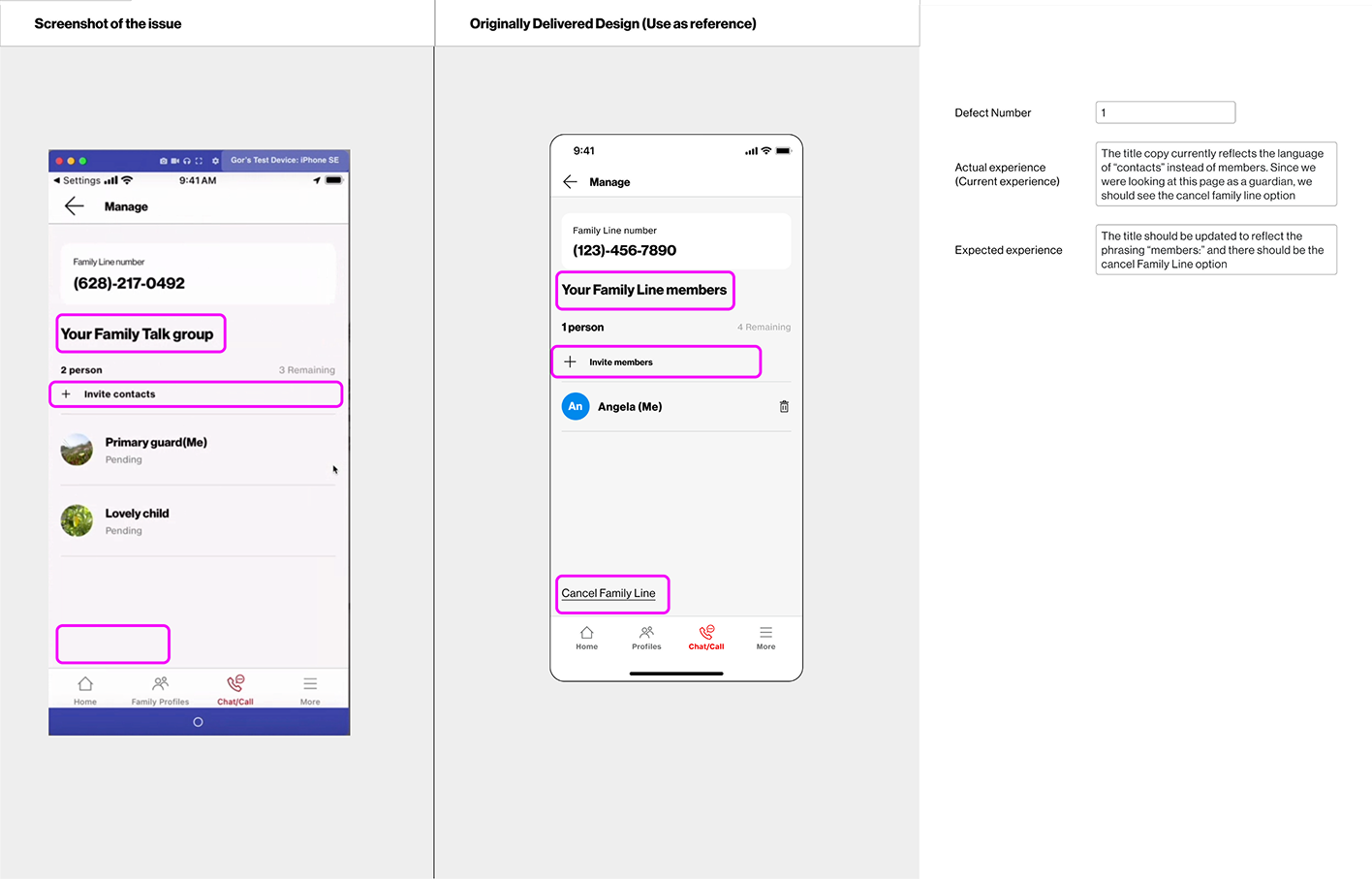Connecting Family Members on One Shared Phone Line
PROJECT SUMMARY
Verizon is currently in the process of expanding their premium content for new and existing users of their new family mobile app, Verizon Family. A premium subscription feature that is being introduced is Family Line, a feature that enables one phone number to be shared with up to 5 family members at the same time and allows them to initiate, receive and join active calls.
I am the lead designer tackling the onboarding process, line management, and call functionality for all new and existing premium subscription users, working closely with my cross-collaboration team with Development, and Product leads.
This feature officially launched to Verizon Family Plus subscribers as of August 2025.
Check out the roll out of Verizon Family as a perks option for myPlan.
Click the link to see our How to use Family Line view.
PROBLEM STATEMENT
In today's digital world, families need seamless, reliable communication solutions that they can utilize to help with coordinating care and staying connected and aware of what is going on with their loved ones. Existing solutions, such as conference calling or group messaging, can be cumbersome, lack seamless integration, or require all participants to have the same device ecosystem.
Family Line aims to provide a shared secondary phone line that allows up to five callers to join at once, enabling effortless group communication for families. The challenge is to design an intuitive and frictionless experience that integrates smoothly into users' existing phone habits while addressing key concerns such as ease of setup, call management, privacy, and accessibility.
This case study explores how the Family Line experience was designed to be simple, reliable, and adaptable to various family dynamics, ensuring that staying connected feels natural and stress-free.
Anticipating and addressing evolving user needs
The users of Verizon Family includes quite a variety of roles and expectations; however the primary target audience are caregivers. This includes caregivers for young children, multiple children, teenagers, and the elderly.
Caregivers are often asked to provide an emergency contact number for their dependents, which can lead to frustration and stress, if that single contact cannot be reached or communicated when the needs of the dependent arise.
My role in the project
As the Lead Product Designer, I collaborated with our experience managers, feature owner, and front-end developers to enhance and iterate on possible solutions for the improvement of the profile and family onboarding.
We each had specific responsibilities; my job was to work on user onboarding, inviting and managing members, and feature usage such as making and receiving calls.
The mandate: design an intuitive and frictionless user experience that integrates seamlessly with existing mobile behaviors
We were given a similar existing app in the Verizon catalog, One Talk, to reference for the call functionality and usage. Once we reviewed our reference material, our product owners were becoming concerned on how we would integrate a business focused feature into a family tailored app.
We started out buy narrowing down the functions we wanted to carry over into Verizon Family, and removed unnecessary features that didn’t serve our demographic. Once I had the basic requirements from the team, I began benchmarking large 3rd party apps onboarding flows, such as Life 360, Whatsapp, Instagram and Strava.
Gathering customer insights through rapid research testing.
Once the product and design teams aligned on the onboarding, invite, and call flows, I began solidifying the screen UI and worked with our customer research team to get some user feedback on the current designs. Through this process, we found that users found the users were able to understand what Family Line is, and thought it would provide their family value by using it. We are working with our content team to update the description and copy we present to help with the misunderstanding of what the secondary line is for their family.
Creating design artifacts
After receiving the feedback from the user study, I began creating a design specification file that provided both the users flows as well as the technical decision points. This was then used as a collaboration tool to discuss technical feasibility with our development team members to ask any questions and to aid in sprint planning for implementation.
Performed visual QA to verify the integrity and precision of designs.
As the development team began to get stable code, nearing the apps launch, I began to complete visual testing to make sure that the code matched the designs that were handed off. If I came across discrepancies in the designs, I began documenting the defects in Jira for the development team to log and address.

